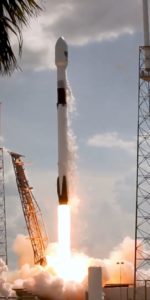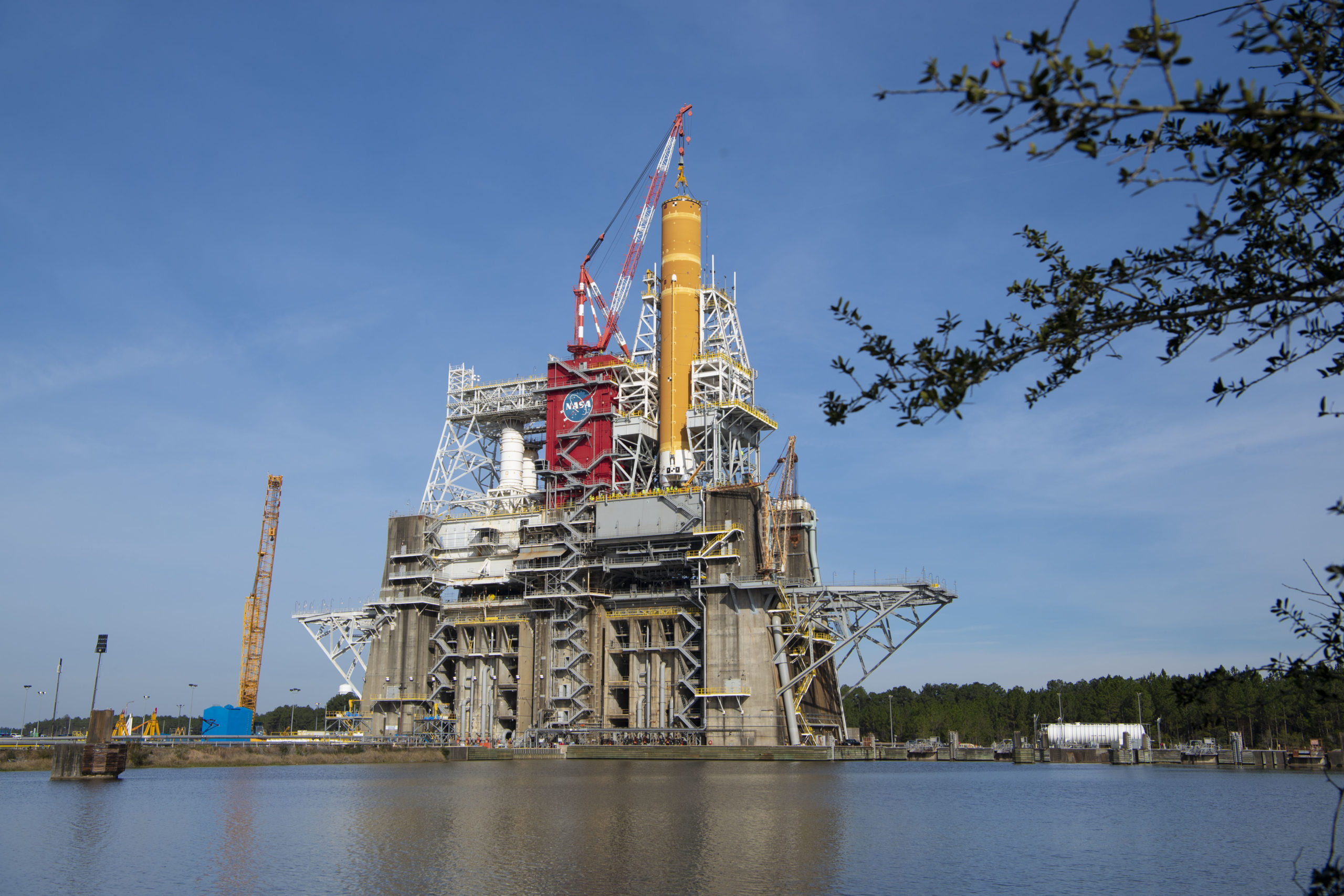
Teams at NASA’s Stennis Space Center in Bay St. Louis, Miss., are ready to resume “Green Run” test activities on the core stage of the first Space Launch System (SLS) rocket as soon as Monday, 31 August. The 212-foot-tall (64.6-meter) core—powered by four shuttle-heritage RS-25 engines, with a combined propulsive “kick” of over 1.6 million pounds (720,000 kg)—will provide about a quarter of the liftoff thrust to get the SLS airborne late next year on its long-awaited Artemis-1 uncrewed test flight around the Moon.
The core has resided in Stennis’ B-2 Test Stand since January, where it is being put through eight critical Green Run tests to evaluate its integrated systems performance and perform a full-flight-duration static firing of its engines, lasting around eight minutes. But the recent threat posed by Hurricanes Marco and Laura to the U.S. Gulf Coast forced a temporary pause of Green Run activities, only days before the start of the fifth and last “functional” test.
The core stage was delivered to Stennis from NASA’s Michoud Assembly Facility (MAF) in New Orleans, La., aboard the Pegasus barge in the second week of January. It was lifted into the B-2 Test Stand later that month and put through its first Green Run test within days. Known as the “Modal Test”, this process utilized mechanical “shakers” to impose dynamic forces on the core stage to identify bending modes. Information from this test is expected to aid the verification of vehicle models necessary to operate the SLS Guidance, Navigation and Control (GNC) systems.
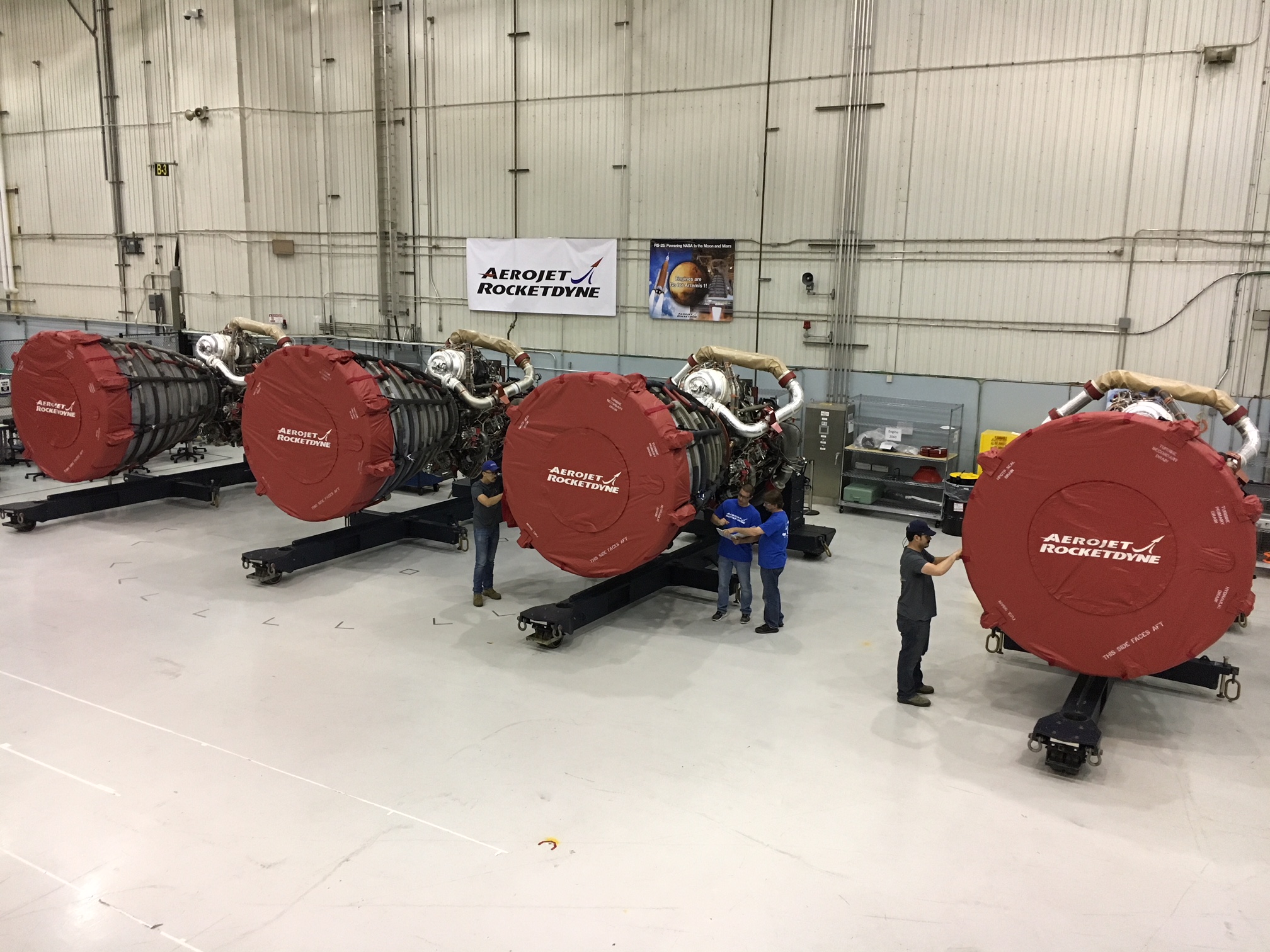
However, the steady worldwide march of the COVID-19 coronavirus pandemic pushed Stennis into a “Level Four” posture on the scale of NASA’s response framework in March, with only personnel needed to perform mission-essential activities relating to the safety and security of the center permitted on site.
“When Stennis closed in March, the team was initiating activities to start the Test 2, the avionics test,” SLS Stages Manager Julie Bassler told AmericaSpace. “There were activities to secure and safe the hardware. When crews returned to work in late May, systems had to be reactivated and checked out for both the test stand and test control center. Teams were also working under constraints to ensure their safety and follow federal and CDC guidelines. With that in mind, once the test started, we maintained the same duration for the test as originally planned. There are periods for vehicle power-down, data analysis and re-activation between each test and to date, the tests are taking the amount of time that was planned.”
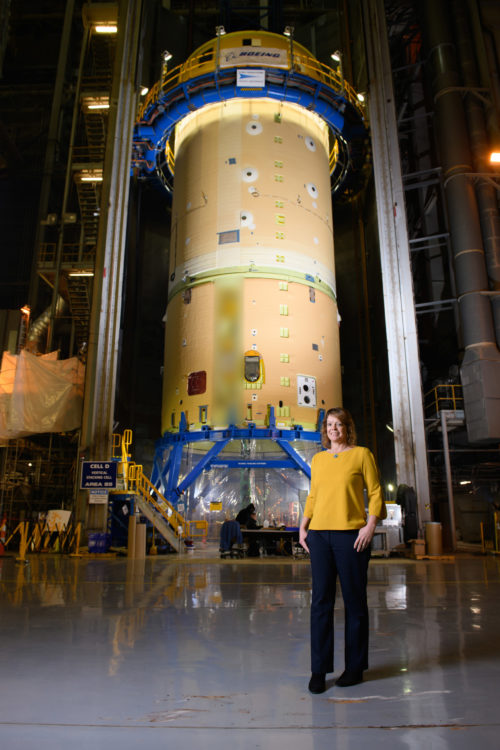
Work resumed in a reduced capacity in mid-May and in late June the second Green Run test—the “Avionics Test”—was successfully completed. The avionics, including the flight control computers and electronics, as well as a multitude of sensors which gather flight data and monitor the health of the core stage in flight, were powered-up and checked out. The third test, dubbed “Fail-Safes” and completed in early July, checked the rocket’s safety systems and included several simulations of potential problems. The fourth (“Propulsion”) test, which was wrapped up earlier in August, checked the core for leaks and evaluated command-and-control operations for the Main Propulsion System (MPS) elements which directly interface with the RS-25 engines.
However, the traumatic human impact of the coronavirus pandemic was not the only direct impactor which hit the Green Run schedule. Recent days have also brought a pair of exceptionally dynamic weather patterns in the menacing forms of Marco and Laura. The former arose in mid-August as a fast-moving tropical wave, then strengthened into a powerful tropical storm which affected parts of the Caribbean, western Cuba and Mexico’s Yucatan peninsula, as well as the U.S. Gulf Coast. After entering the warm waters of the Gulf of Mexico last weekend, it briefly intensified to hurricane strength, then weakened due to an increase in wind-shear and made landfall near the mouth of the Mississippi River with 40 mph (65 km/h) winds last Monday evening.
In the meantime, the active tropical cyclone of Laura, which formed off the coast of West Africa, was initially labeled “Tropical Depression 13”. It moved swiftly westwards and grew in ferocity, bringing heavy rainfall and flash flooding to parts of the Caribbean. It hit Haiti and the Dominican Republic with particular severity and forced the evacuation of a quarter-million people in Cuba. After making landfall in the Dominican Republic last Sunday, Laura regained strength and began moving west-northwestwards to the Gulf Coast. By Monday evening, it sat off the western coast of Cuba and was making steady progress towards Louisiana with sustained winds of 65 mph (105 km/h).
In response to the progress of these two meteorological monsters, NASA Administrator Jim Bridenstine announced Monday that Green Run activities were being temporarily paused. “NASA Stennis engineers have paused Green Run testing for the @NASA_SLS rocket,” he tweeted, “and secured the core stage and B-2 test stand until the storms have passed and the team can safely resume work on-site.”
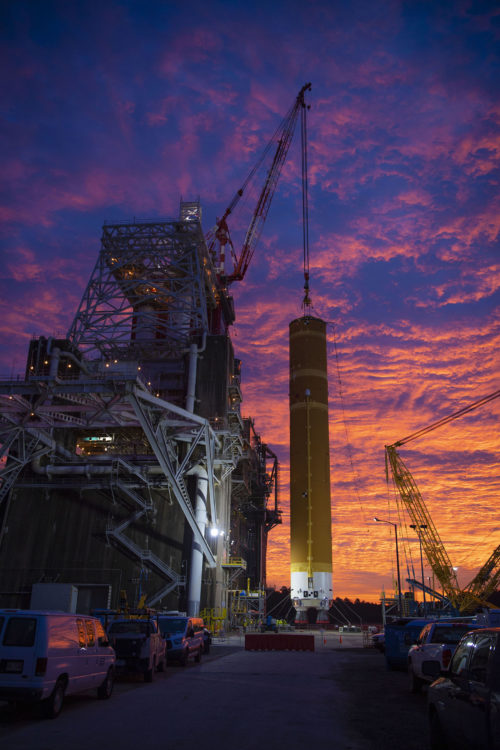
This was a pity, because the fifth Green Run test had originally been targeted to begin last Sunday, 23 August. “We had started the facility preparation work for the Green Run Test 5,” NASA’s Tracy McMahan told AmericaSpace. “Due to the prediction of two hurricanes in the Gulf of Mexico with potential impacts to Stennis Space Center, NASA made the prudent decision to put the valuable Artemis-1 core stage flight hardware and B-2 test stand in a safe configuration.”
Following its landfall at the mouth of the Mississippi River last Monday, Marco rapidly lost power and its remnants had dissipated off the Louisiana coast by Wednesday, 26 August. Laura, meanwhile, strengthened into a Category Four hurricane with peak winds of 150 mph (240 km/h) and made landfall at Cameron, La., on Thursday. Moving inland, it began to weaken to Tropical Storm status, then Tropical Depression status over Arkansas, reaching a position just south-southwest of Little Rock by Thursday evening.
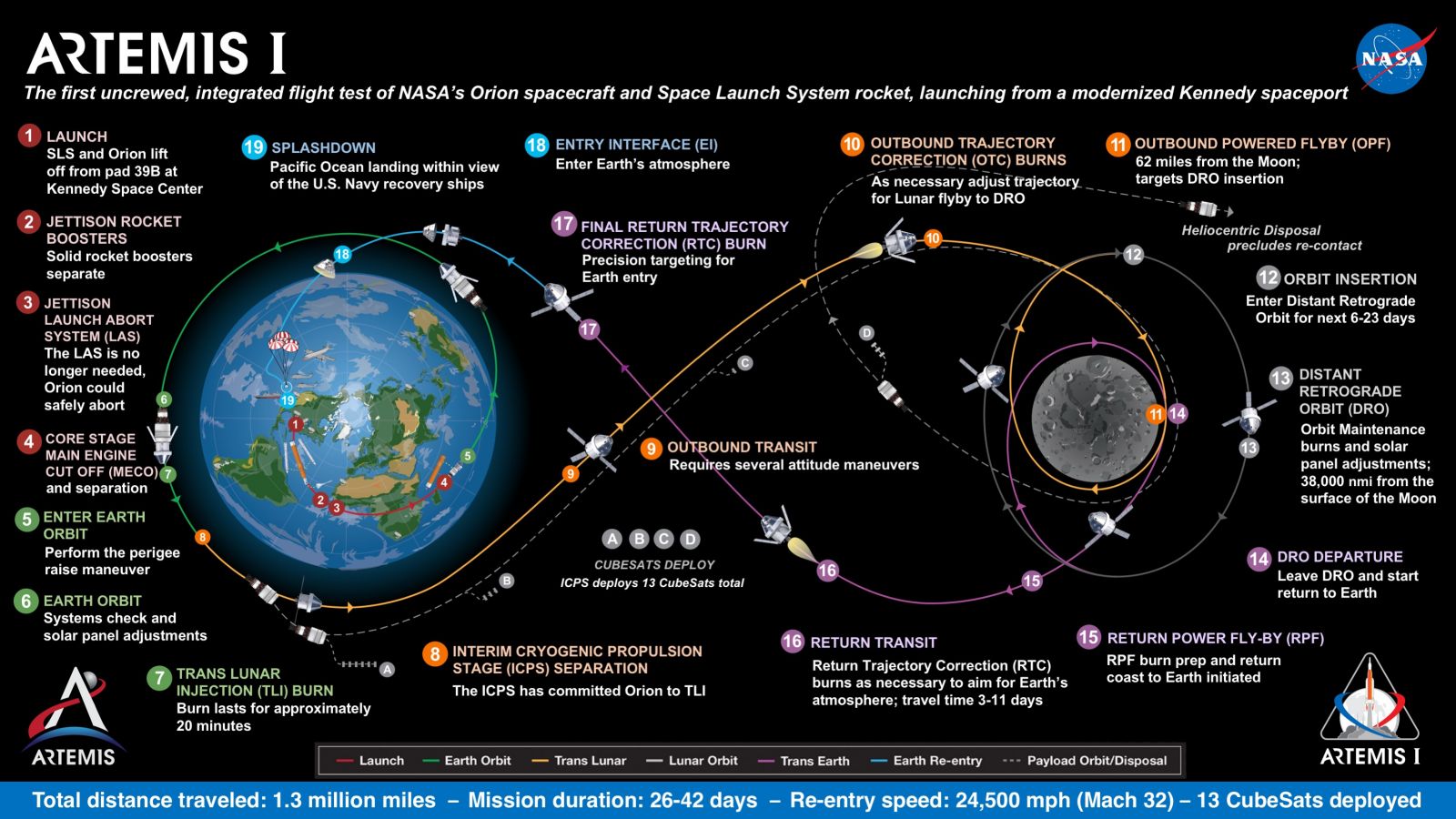
With the gradual departure of Marco and Laura, NASA’s Stennis teams anticipate the resumption of Green Run test operations as early as Monday, 31 August. With four tests in the bag so far, Test 5 is considered the final “functional” test and is principally devoted to the core stage’s Thrust Vector Control (TVC) and hydraulics. “The Thrust Vector Control System is the part of the engine that steers or gimbals the engine during launch, so they’ll actually move the engine just like they move it for launch,” Ms. McMahan explained. “It has huge components, called actuators, that steer the engines and they will also check out systems that provide hydraulics to the engine valves.”
Assuming a resumption of activity in the B-2 Test Stand as early as Monday, the goal is to complete Test 5 during the week beginning 7 September. But NASA is not working to any firm dates. “For each of these tests, it is the first time they are conducting the test on a brand-new stage,” Ms. McMahan told us. “So they don’t really have a hard-stop date. It all depends on what they find during the test, if they have to fix anything or make any adjustments. Their goal is to finish this test the week of 7 September.” That said, she added that Test 4 was completed earlier than intended, “which put them on a really good forward path, even with the disruption of shutting down for these storms”.
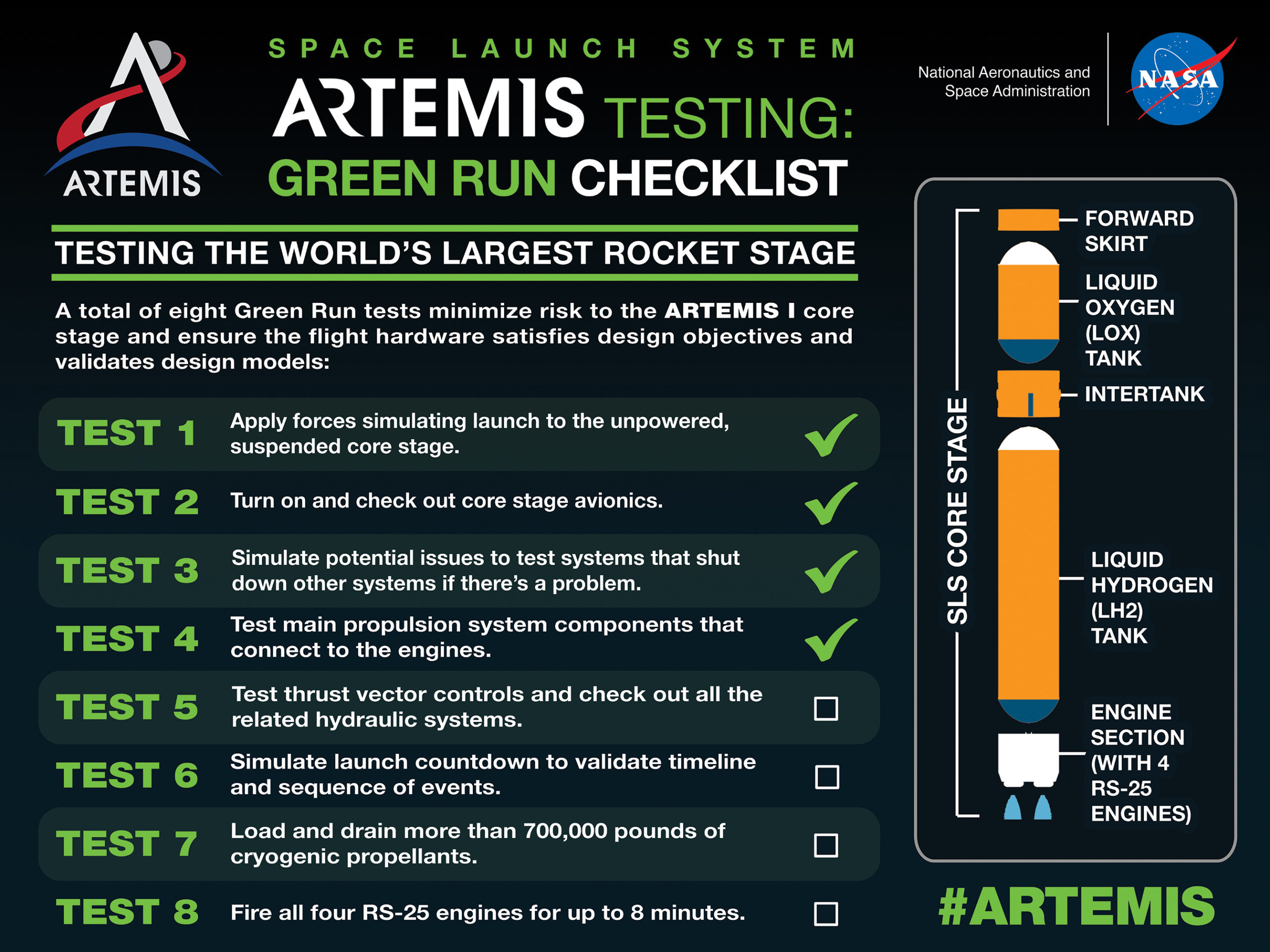
Although the Green Run comprises eight steps in total, the first five are designated “functional” tests, in that they will check out the performance of integrated core stage systems. The final three steps—simulating the countdown sequence, performing a fully-fueled Wet Dress Rehearsal (WDR) and hot-firing the four RS-25 engines for a full-flight-duration of 8.5 minutes—are considered more a test of core stage operations.
“The schedule is being assessed after Test 5, but right now, the goal is still to do the hot-fire near the end of October,” Ms. McMahan said. “The countdown starts in September, after Test 5. The “wet-dress” takes much longer, because you are actually loading fuel, just as they will load it again for the hot-fire. There are also other activities that occur between tests that lead up to each test. By the time NASA and Boeing are ready to do the hot-fire, they will have methodically checked out and operated every system on the stage from top to bottom, because they are all needed for the hot-fire and ultimately for the launch of Artemis-1.”
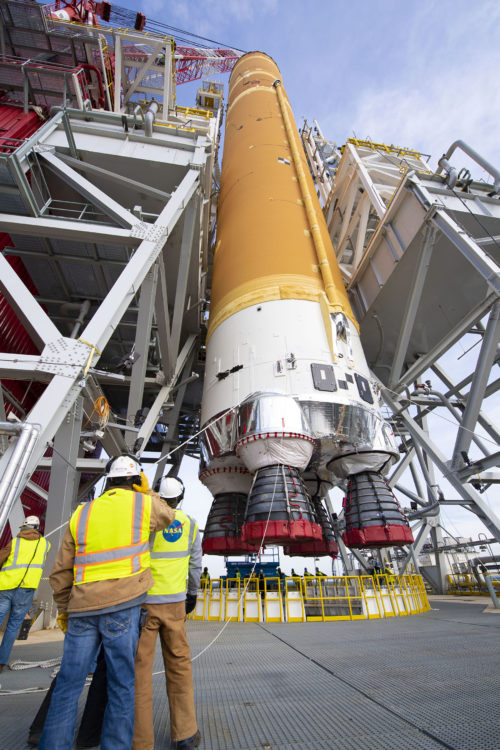
In a sense, test-firing the RS-25s offers a throwback to the Space Shuttle era, for all four engines assigned to Artemis-1 previously flew on the reusable fleet of orbiters. And Ms. Bassler noted that there are similarities between the Green Run hot-fire test and Main Propulsion Test Article (MPTA) tests conducted during the 30-year shuttle program.
“For affordability, SLS decided not to build a test article, but to test the actual core stage flight hardware,” she explained. “A test of a stage is much more complex than a single engine test. The test firings of the engines help qualify them for flight. Likewise, the test firing of the core stage for Green Run helps to certify the stage for flight which is an integrated test of the avionics system, software, propulsion system and the four engines.”
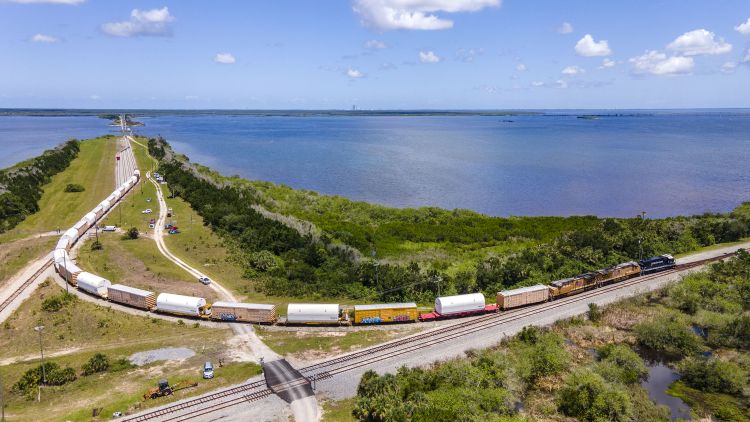
According to Ms. Bassler, following the completion of the Green Run testing this fall, the core stage will be shipped to the Kennedy Space Center (KSC) at the end of this year or very early in 2021. “After the test, the team will take some time to analyze the data and inspect the hardware,” she told us. “Since this is flight hardware, it is important to do a thorough inspection. We know we’ll need to do some refurbishment to the hardware. Some of that will be done at Stennis and some at Kennedy.
“While the stage is undergoing Green Run testing, the Exploration Ground Systems (EGS) team at Kennedy will be stacking the boosters. They’ll be in the Vehicle Assembly Building when the core stage arrives. The core stage will be lifted up and placed inside the VAB and attached to the boosters.”
.
.
FOLLOW AmericaSpace on Facebook and Twitter!
.
.





